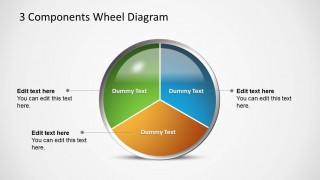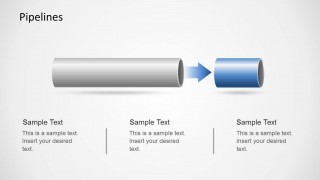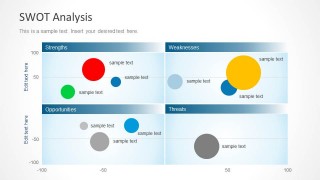Learn more how to embed presentation in WordPress
- Slides
- 16 slides
Copy and paste the code below into your blog post or website
Copy URL
Embed into WordPress (learn more)
Comments
comments powered by DisqusPresentation Slides & Transcript
Presentation Slides & Transcript
Section 5, Chapter 15
Cardiac Output- volume of blood ejected from one ventricle per minute
Product of heart rate and stroke volume
Stroke Volume
Volume of blood expelled from ventricle with each contraction
Average = 70 milliliters per beat (mL/beat) for adult male
Heart Rate
Average = 72 beats per minute
Stroke Volume
70 mL/beat
X
Heart Rate
70 beats/minute
=
Cardiac Output
5040mL/minute
Example:
Factors that influence blood pressure
Cardiac output (and blood pressure) increases with an increase in stroke volume or heart rate.
Factors that influence blood pressure
Blood Volume
Average blood volume in adults = 5 Liters (1.3 gallons)
As blood volume increases, blood pressure initially increases
Peripheral Resistance
Peripheral resistance = friction between blood and blood vessels
Vasoconstriction increases resistance and increases blood pressure
Vasodilation decreases blood pressure
Viscosity of blood
Viscosity = resistance of a fluid to flow (thickness of a fluid).
Blood cells and some plasma proteins increase the viscosity of blood.
Anemia (deficiency of red blood cells) reduces viscosity & lowers blood pressure
Factors that influence blood pressure
Figure 15.24. Some of the factors that influence arterial blood pressure
Factors that influence blood pressure
Figure 15.36 Controlling cardiac output and peripheral resistance regulates blood pressure
Control of Blood Pressure
A combination of factors control blood pressure. These include stroke volume, heart rate, and peripheral resistance:
Control of Blood Pressure
stroke volume
Stroke Volume is directly related to the force of ventricular contraction.
Two events that occur in the ventricles coincide with stroke volume:
1. End-diastolic volume (EDV)
Volume of blood in ventricles at the end of ventricular diastole
As ventricles fill with blood, muscle fibers are mechanically stretched - preload
2. End-systolic volume (ESV)
Volume of blood in ventricles at the end of ventricular systole
A normal health heart expels 60% of blood present in ventricle.
stroke volume
Stroke Volume is the difference between end diastolic volume (EDV) and end systolic volume (ESV):
Stroke Volume = EDV - ESV
Frank-Starling Principle:
The ability of a heart muscle to generate force depends on the original stretch of a muscle prior to contraction (similar to stretching a rubber band)
The degree of stretch (preload) of the myocardial fibers before contraction determines the stroke volume
A greater end diastolic volume results in a greater force of contraction, leading to a greater stroke volume.
Figure 15H
Blood pressure decreases as blood moves away from the heart.
Blood pressure rapidly decreases as the blood moves through the arterial system and into the capillary network.
Little pressure remains in the veins, therefore heart actions contribute very little to venous return.
Venous Return
Venous return depends on:
Skeletal muscle contractions – massaging actions push blood towards heart
Respiratory movements – generates pressure in abdominal and thoracic cavities
Changes in pressure pushes blood along veins
Vasoconstriction – contraction of smooth muscles in tunica media
Sympathetic reflexes vasoconstrict the smooth muscles in veins, which can propel additional blood from venous reservoir towards the heart.
Venous Return
ARTERIAL SYSTEM
STRUCTURES AT Aortic Root
Aortic Valve
Aortic Sinus
Swelling at aortic root
Right and left coronary arteries
Supply blood to myocardium of the heart
Myocardial infarction = blocked coronary artery
Aortic Bodies
Chemoreceptors - monitor CO2 & O2 levels in blood
Branches of Aortic Arch
Brachiocephalic Artery
Brachiocephalic artery divides into:
Right common carotid artery -Supplies blood to right side of face and head
Right subclavian artery - Supplies blood to right arm
Left common carotid artery – supplies blood to left side of face and head
Left subclavian artery – supplies blood to left arm
Figure 15.42 The major branches of the aortic arch are highlighted in yellow.
End of Section 5, Chapter 15
More Presentations

By longwaytothetop2
Published Jan 11, 2013

By longwaytothetop2
Published Jan 11, 2013

By longwaytothetop2
Published Jan 11, 2013

By longwaytothetop2
Published Jan 11, 2013

By longwaytothetop2
Published Jan 11, 2013

By longwaytothetop2
Published Jan 11, 2013

By longwaytothetop2
Published Jan 11, 2013

By longwaytothetop2
Published Jan 14, 2013





